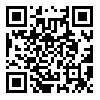目的 基于网络药理学、分子对接、转录组学方法探讨益艾康胶囊治疗AIDS的作用机制。方法 通过中药系统药理学数据库与分析平台及BATMAN⁃TCM、ETCM数据库获取益艾康胶囊的主要化学成分及相应作用靶点,通过GeneCards®、DrugBank、DisGeNET数据库获取AIDS相关靶点,取两者交集获得共有靶点。将益艾康胶囊的中药、主要化学成分和共有靶点导入Cytoscape 3.8.2软件构建药物⁃成分⁃共有靶点网络,通过拓扑学分析获取核心化学成分。将共有靶点导入STRING数据库构建蛋白⁃蛋白相互作用网络,通过Cytoscape 3.8.2软件进行可视化分析获取核心靶点。应用Metascape数据库、DAVID数据库对共有靶点进行基因本体论(GO)功能富集分析和京都基因与基因组百科全书(KEGG)通路富集分析。最后利用分子对接和课题组前期转录组学实验进行验证。结果 共筛选得到益艾康胶囊的主要化学成分880个和对应作用靶点2 614个,AIDS相关靶点8 447个,两者共有靶点1 883个。核心化学成分包括白桦糖醇、月桂酸、香芹酮、姜黄酮、棕榈酸、硬脂酸等。核心靶点包括SRC、ESR1、HSP90AA1、HDAC1、TP53、GRB2、SMAD3、SMAD4、JUN、NR3C1等。GO功能富集分析结果显示,共有靶点的生物过程主要涉及血液循环、对细胞外刺激的反应、有机羟基化合物代谢等,细胞组分主要涉及细胞体、转录调节复合物等,分子功能主要涉及氧化还原酶活性、信号受体激活剂活性、蛋白质结构域特异性结合等。KEGG通路富集分析结果显示,共有靶点主要富集在癌症途径、人巨细胞病毒感染、人类乳突病毒感染、环磷酸腺苷信号通路、丝裂原活化蛋白激酶(MAPK)信号通路等信号通路。分子对接验证结果显示,大多数核心化学成分与核心靶点蛋白可自发结合,其中以白桦糖醇与ITGAV的结合为最佳对接模式。转录组学实验验证结果显示,核心靶点β⁃catenin、SMAD4、RXRA、SOS1、NR3C1,以及MAPK信号通路在益艾康胶囊治疗AIDS中发挥关键作用。结论 益艾康胶囊可能通过白桦糖醇、月桂酸、香芹酮、姜黄酮、棕榈酸、硬脂酸等核心化学成分,调节SRC、HSP90AA1、HDAC1、TP53、SMAD3、SMAD4、JUN、NR3C1等核心靶点,以及MAPK信号通路等通路,发挥治疗AIDS的作用。
广西医学 页码:1555-1563
作者机构:姜庆成,在读硕士研究生,研究方向为中医药防治感染性疾病。
基金信息:国家自然科学基金(82004344、81804060) ;河南省自然科学基金(212300410187);河南省“双一流”创建学科中医学科学研究专项(HSRP⁃DFCTCM⁃2023⁃1⁃30);河南中医药大学科研苗圃工程项目(MP2023⁃04)
- 中文简介
- 英文简介
- 参考文献
Objective To explore the mechanism of Yiaikang Capsules for the treatment of AIDS based on network pharmacology, molecular docking, and transcriptomics methods. Methods The main chemical components and their corresponding effect targets of Yiaikang Capsules were obtained from the Traditional Chinese Medicine Systems Pharmacology Database and Analysis Platform, and databases of BATMAN⁃TCM and ETCM, and targets related to AIDS were obtained from the databases of GeneCards®, DrugBank, DisGeNET, and then the common targets were obtained after acquiring intersection of the two. The Traditional Chinese Medicine, main chemical components, and common targets of Yiaikang Capsules were imported into the Cytoscape 3.8.2 software for establishing drug⁃components⁃common targets network. The core chemical components were obtained through topological analysis. The common targets were imported into the STRING database for establishing protein⁃protein interaction network, and visualized analysis was performed by the Cytoscape 3.8.2 software for obtaining the core targets. The Gene Ontology (GO) functional enrichment analysis and Kyoto Encyclopedia of Genes and Genomes (KEGG) pathway enrichment analysis were performed on common targets by employing the databases of Metascape and DAVID. Eventually, the validation was performed by using molecular docking and preliminary transcriptomics experiment of the research group. Results A total of 880 main chemical components and 2614 corresponding targets of Yiaikang Capsules were screened and obtained, targets related to AIDS were 8447, and the common targets of the two were 1883. The core chemical components contained betulin, lauric acid, carvone, turmeric, palmitic acid, and stearic acid, etc. The core targets contained SRC, ESR1, HSP90AA1, HDAC1, TP53, GRB2, SMAD3, SMAD4, JUN, and NR3C1, etc. The results of GO functional enrichment analysis revealed that the common targets were mainly involved in biological processes such as blood circulation, response to extracellular stimulation, and metabolism of organic hydroxyl compounds, in cellular compositions such as cell body, transcriptional regulatory complex, and in molecular functions such as oxido⁃reductase activity, signal receptor activator activity, protein domain⁃specific binding. The results of KEGG pathway enrichment analysis indicated that the common targets were mainly enriched in cancer approaches, human cytomegalovirus infection, human papillomavirus infection, cyclic adenosine monophosphate signaling pathway, mitogen activated protein kinase (MAPK) signaling pathway, etc. The results of molecular docking validation interpreted that most of the core chemical components could spontaneously bind to the core target proteins, among which the binding of betulin to ITGAV was the best docking mode. The results of transcriptomics experiment validation demonstrated that the core targets with respect to β⁃catenin, SMAD4, RXRA, SOS1, NR3C1, and MAPK signaling pathway played a key role in the treatment of AIDS by Yiaikang Capsules. Conclusion Yiaikang Capsules can regulate the core targets in terms of SRC, HSP90AA1, HDAC1, TP53, SMAD3, SMAD4, JUN, and NR3C1, and pathways with respect to MAPK signaling pathway, etc., so as to exert therapeutic effect on AIDS through core chemical components of betulin, lauric acid, carvone, turmeric, palmitic acid, stearic acid, etc.
- ref
- ref
- ref
- ref
- ref
- ref
- ref
- ref
- ref
- ref
- ref
- ref
- ref
- ref
- ref
- ref
- ref
- ref
- ref
- ref
- ref
- ref
- ref
- ref
- ref
- ref
- ref
- ref
- ref
- ref
- ref
- ref
- ref
- ref
- ref
- ref
- ref
- ref




 注册
注册 忘记密码
忘记密码 忘记用户名
忘记用户名 专家账号密码找回
专家账号密码找回 下载
下载 收藏
收藏
